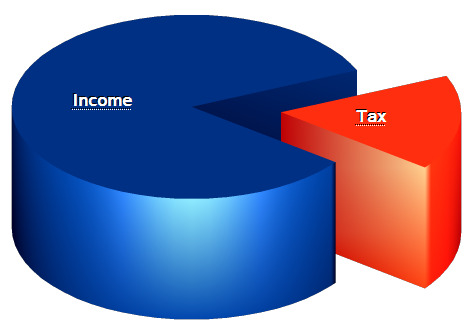Taxes are a defined as mandatory payments of the contributors to the budget and to the extra-budgetary funds in the amount determined by law and within the stipulated deadlines.
The functions of taxes are a manifestation of their essence; they are a means to represent the characteristics of taxes. The functions of taxation illustrate its social purpose of the value-based distribution and redistribution of income. Each of the functions fulfilled by the taxation instrument is a manifestation of an internal feature, an indicator or trait or this economic category.
There are five main functions of taxation: fiscal, redistributory, regulating, controlling, and promoting.
1) The main function of taxation is the fiscal one. It is through fiscality that taxes play their role in the formation of the state budget necessary for the realization of national and holistic state programmes. The fiscal function provides for the achievement of the main social goal of taxation – the formation of the state’s financial resources necessary for executing the role of the latter (defense, social, environmental protection, etc.)
2) The allocation function of taxation expresses their essence as a special centralized instrument of allocation relations and consists of the social income redistribution among various groups of citizens: from wealthy to deprived ones, which ultimately provides for the assurance of the social stability of the population.
3) The regulatory function of taxation was initiated as soon as the state started to take active part in the economic set-up of the society. This function is aimed at achieving specific goals of the taxation policy through the taxation mechanism. Taxation regulation entails three sub-functions:
- The stimulating sub-function is aimed at the development of special socio-economic processes, and is implemented through a system of allowances, exemptions and preference arrangements. The legislation in force stipulates the stimulation of a number of taxpayer categories such as the owners of small enterprises, the agricultural producers, capital investors, or charities.
- The destimulating sub-function inhibits some socio-economic processes through the conscious exaggeration of the taxation burden. As a rule, the effect of this sub-function is related to the introduction of excessive tax rates. These are, for example, the protectionist measures of the state, aimed at supporting local producers through prohibitive import custom duties. It is important to keep in mind, nevertheless, that taxation relations, as any other relations, must replicate continuously. Taxes must be collected today, tomorrow and always. This is why the utilization of the destimulating sub-function should not lead to the weakening of the taxation basis, to suppression, or even to liquidation of the tax source. Such an exaggeration may result in a situation where there will be no income/processes to be taxed.
- The replication (regeneration) function is explained as follows: by taxing the utilization of natural resources, roads, mineral and primary resources, the state uses these proceeds in order to regenerate the exploited resources.
4) The controlling function of taxation – through taxation, the state controls the financial-economic activity of juridical and natural persons. This also contributes to controlling the sources of income and the directions of spending.
5) The incentive function stipulates special taxation arrangements for a certain group of citizens, who are social achievers (participants in wars, etc.). This function of taxation has a social facet.
